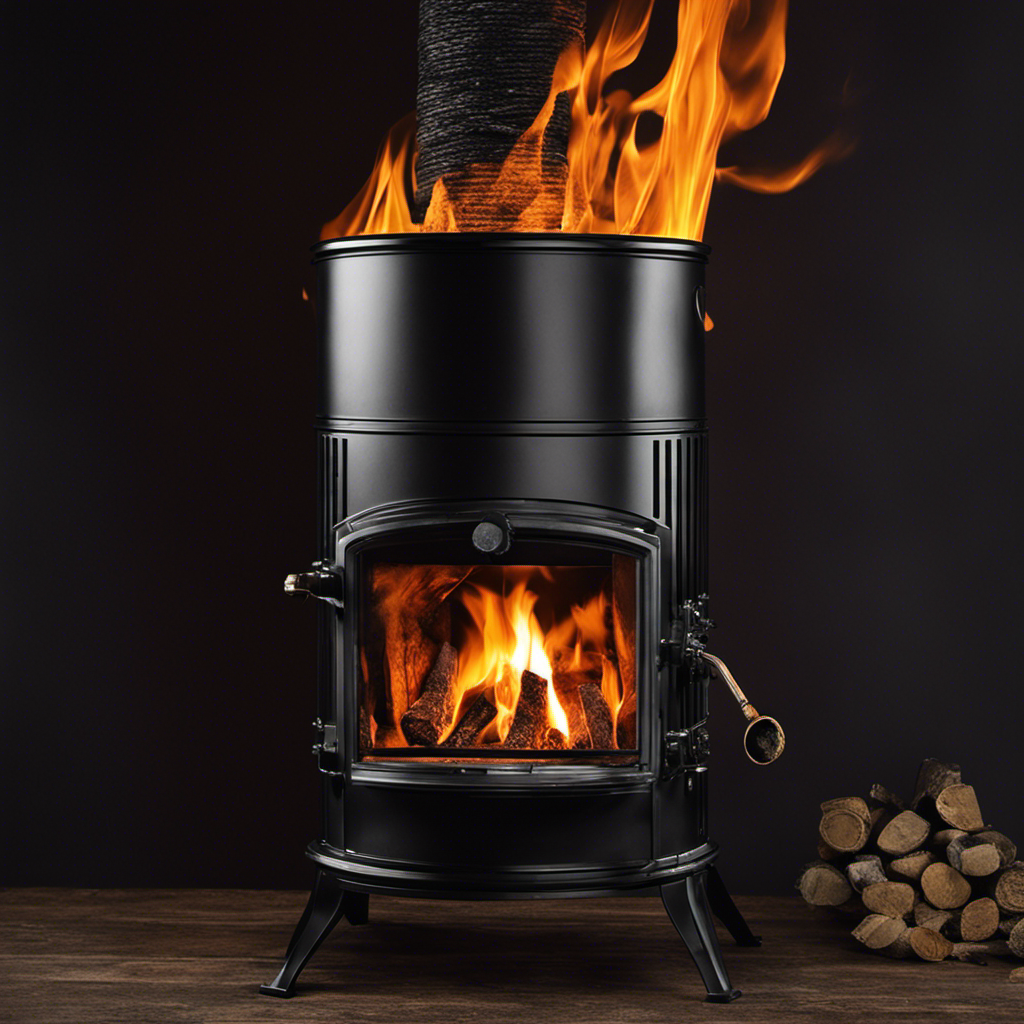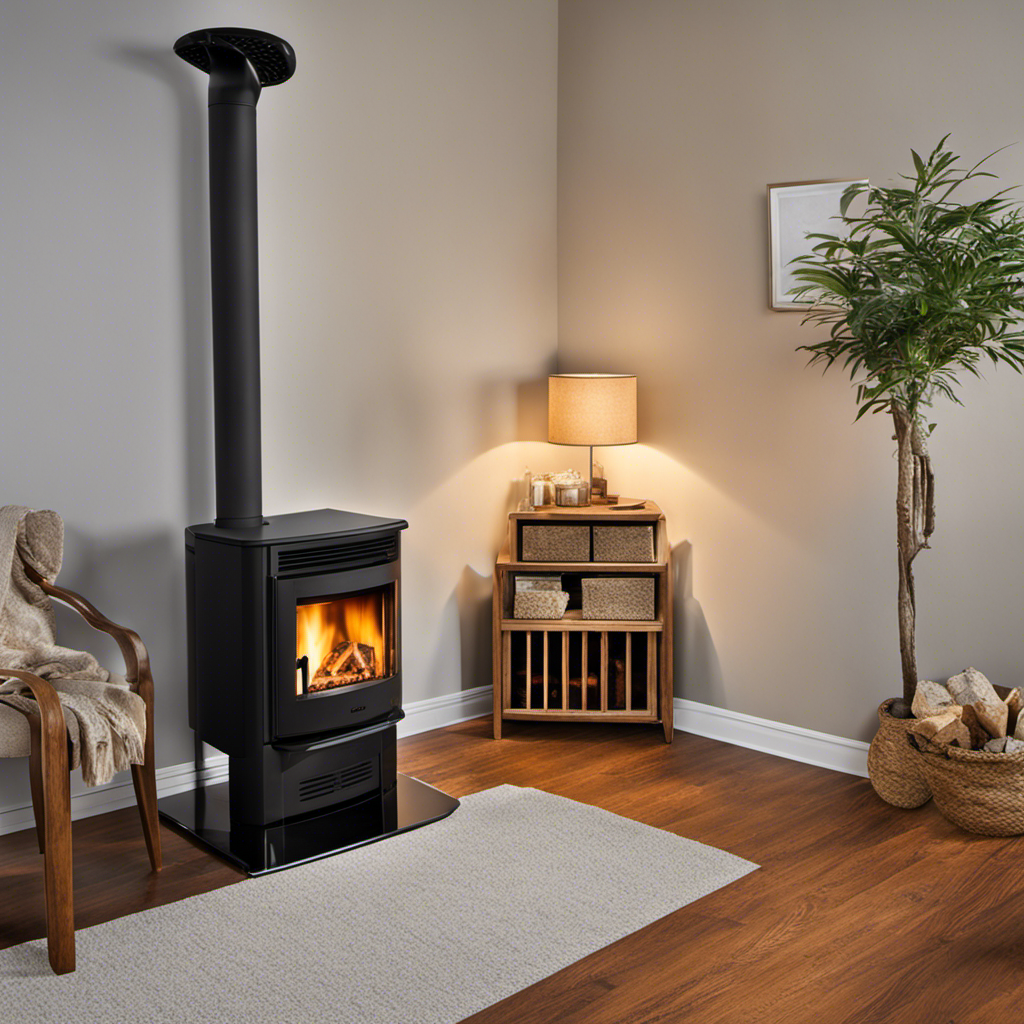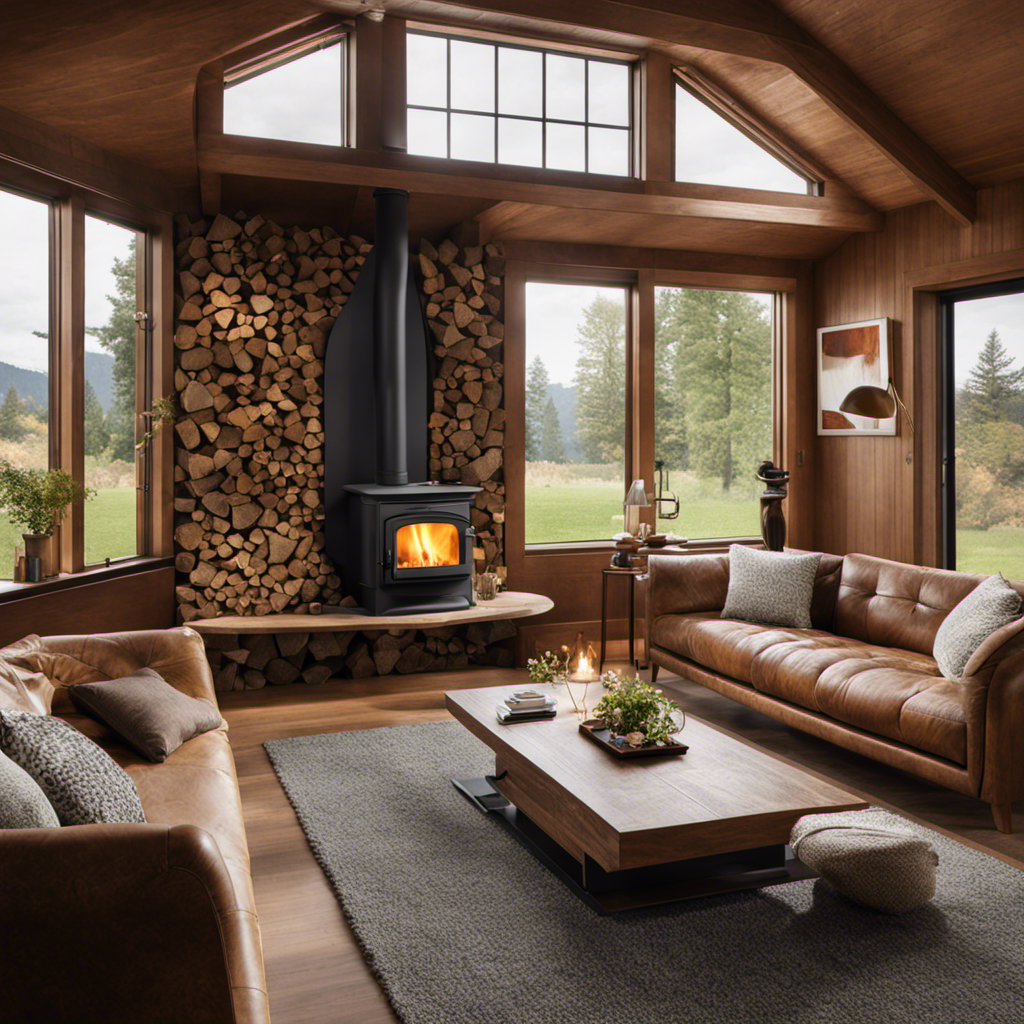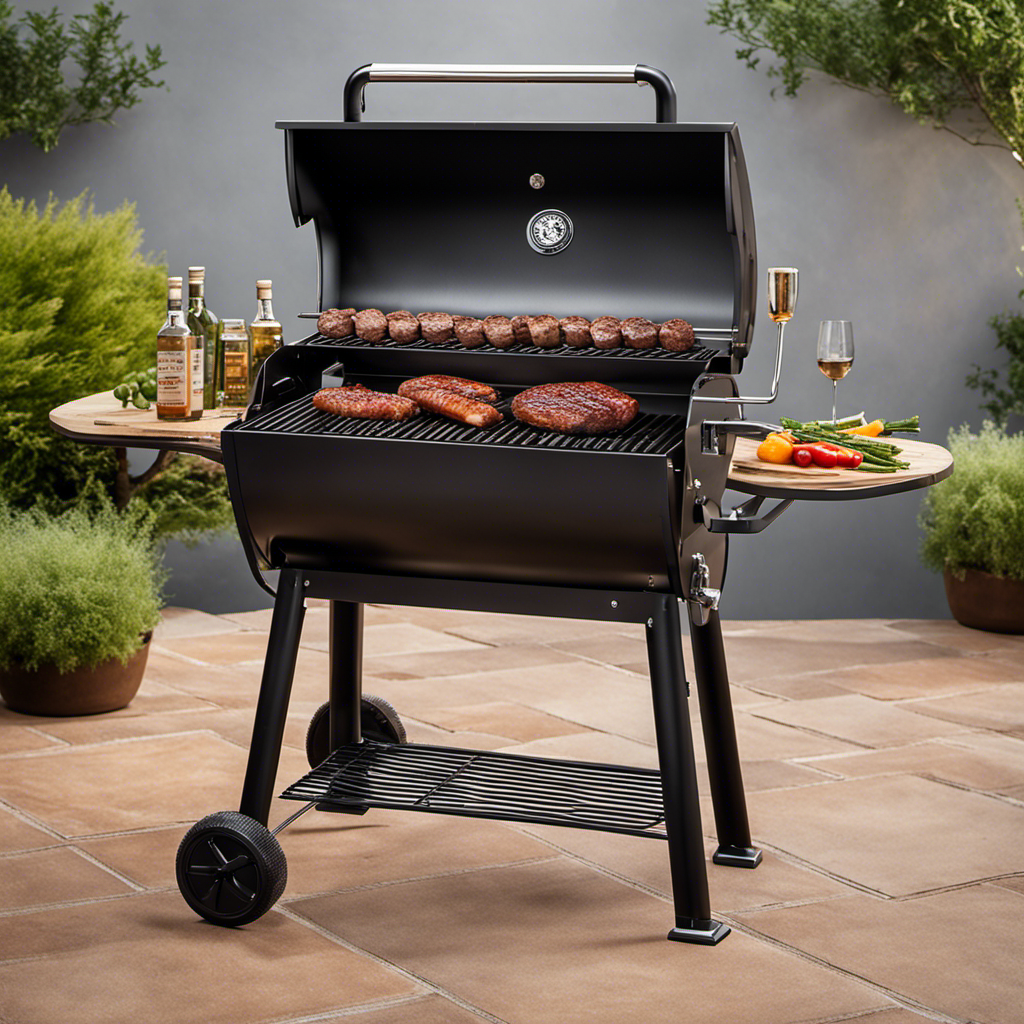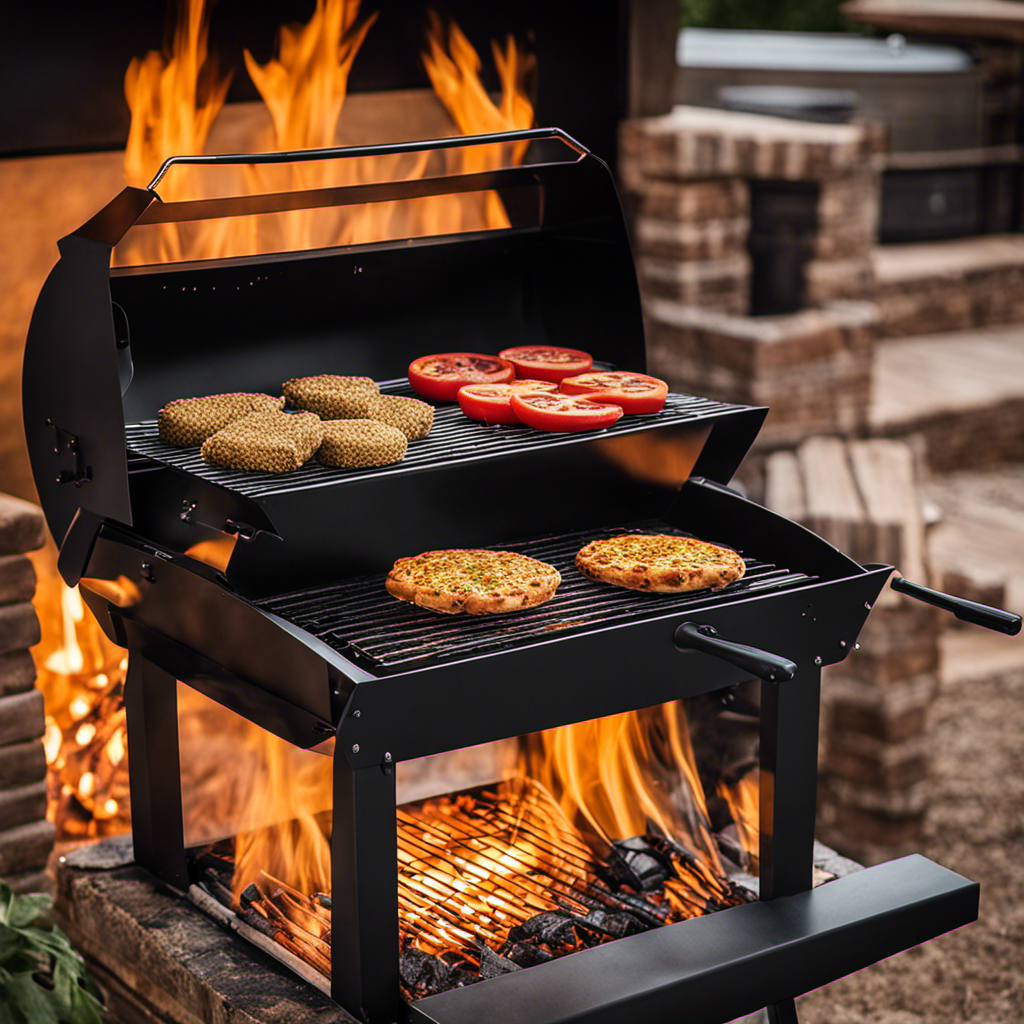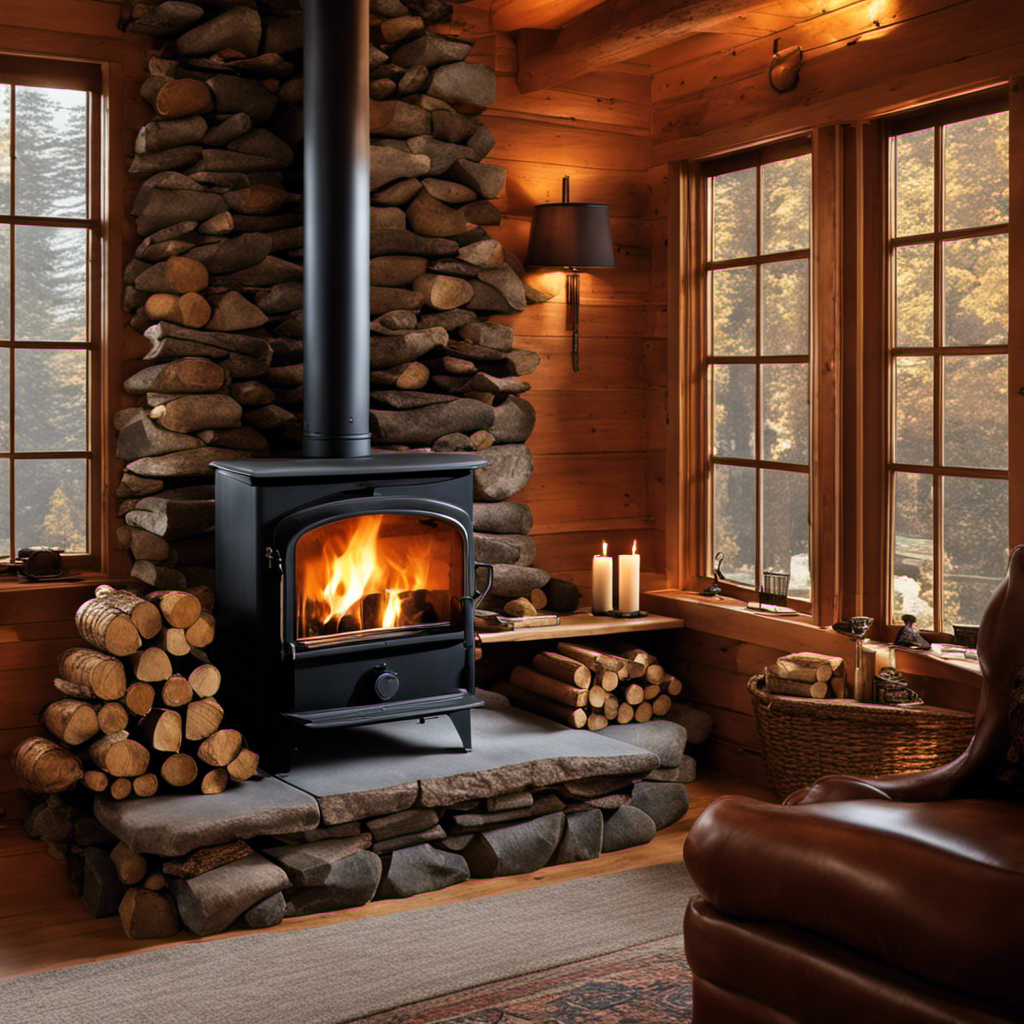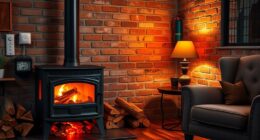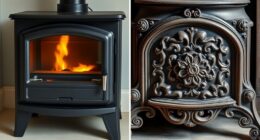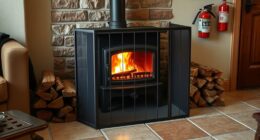As property owners using pellet stoves for warmth, we understand the crucial need for consistent upkeep. Overlooking the comprehensive cleaning of your pellet stove pipe increases the risk of fire hazards. Accumulations of ash and debris, along with blockages and overheating, pose significant dangers.
That’s why it’s crucial for us to take the necessary steps to clean our pipes, removing any accumulated ash and debris. By doing so, we can maintain the efficiency of our stoves and minimize the risk of fires caused by heating equipment.
Key Takeaways
- Neglecting pellet stove pipe cleaning can lead to fire hazards
- Regular cleaning of the pellet stove pipe is important for maintaining efficiency and preventing clogs and overheating
- Cleaning frequency depends on factors such as pellet type and flue condition
- Hiring a professional may be a good option if you’re not comfortable cleaning the pellet stove pipe yourself
The Hidden Danger of Neglected Pellet Stove Pipes
We should be aware of the hidden danger of neglected pellet stove pipes, as it can increase the risk of fire hazards. One of the hidden dangers is the buildup of soot in the pipes. Over time, soot can accumulate and settle on the surfaces of the pipes, leading to potential clogs and overheating.
Neglecting chimney inspections can also have a significant impact. Without regular inspections, any issues or blockages in the pipes can go unnoticed, increasing the risk of fires caused by heating equipment.
It’s crucial to prioritize the cleaning and maintenance of pellet stove pipes to prevent these hidden dangers. Regular cleaning and inspections can help remove soot buildup, reduce the risk of clogs, and ensure the efficient operation of the stove.
The Importance of Regular Pellet Stove Pipe Cleaning
Regularly cleaning our pellet stove pipe is essential to maintain its efficiency and prevent potential issues. Here are three reasons why regular cleaning is important:
-
Efficient operation: Regularly cleaning the pellet stove pipe removes ash and debris buildup, ensuring that the stove functions at its best. This allows for optimal heat output and efficient fuel consumption, saving you money in the long run.
-
Long term cost savings: By maintaining a clean pellet stove pipe, you can prevent soot from settling on surfaces and reduce the risk of clogs and overheating. This helps to avoid costly repairs and extends the lifespan of your stove.
-
Fire prevention: Neglecting to clean the pellet stove pipe can lead to the accumulation of flammable materials, increasing the risk of fires caused by heating equipment. Regular cleaning helps to eliminate this hazard and ensures the safety of your home.
The Risk of Fire From Ignored Pellet Stove Pipe Maintenance
As homeowners, it’s important to prioritize the regular maintenance of our pellet stove pipe to minimize the risk of potential accidents. Ignoring pellet stove pipe maintenance can lead to a serious fire hazard.
Professional cleaning offers several benefits, including removing ash and debris buildup, preventing soot from settling on surfaces, and reducing the risk of clogs and overheating.
The quality of the pellets used also impacts the frequency of maintenance. Premium pellets with low ash content require less frequent cleaning, while budget pellets with high ash content require more frequent cleaning. It’s crucial to consider the condition of the flue as well.
Generally, cleaning the pipe every 3-4 months is recommended, but adjustments should be made based on circumstances.
Regular maintenance of the pellet stove pipe is essential for safe and efficient operation.
How Neglecting Pellet Stove Pipe Cleaning Can Lead to Disaster
The consequences of overlooking the maintenance of our pellet stove pipe can be disastrous. Neglecting pellet stove pipe cleaning can lead to a hidden danger that puts our homes and loved ones at risk.
Here are three reasons why ignoring pellet stove pipe maintenance is a serious mistake:
- Fire Hazard: Neglected pellet stove pipes can accumulate ash and debris, increasing the risk of fires caused by heating equipment.
- Reduced Efficiency: Soot buildup in the pipe can settle on surfaces, reducing the stove’s efficiency and potentially clogging the flue.
- Overheating Potential: Without regular cleaning, the pipe can become clogged, causing the stove to overheat and potentially malfunction.
To avoid these dangers, it’s crucial to clean the pellet stove pipe regularly. Don’t underestimate the importance of this maintenance task, as it can help to prevent disaster and keep your pellet stove running safely and efficiently.
The Consequences of Ignoring Pellet Stove Pipe Maintenance
Ignoring the maintenance of our pellet stove pipe can lead to serious consequences that put our homes and loved ones at risk. Regular maintenance of the pellet stove pipe is crucial to ensure its safe and efficient operation.
Neglecting this maintenance can result in a fire hazard and costly repairs. The cost of professional pellet stove pipe cleaning may vary depending on the service provider and the complexity of the job. However, investing in professional cleaning is essential to ensure that the pipe is thoroughly cleaned and free from any blockages or buildup.
On the other hand, regular maintenance of the pellet stove pipe can be done by the homeowners themselves. It typically takes less than an hour to clean the pipe, including removing ash and debris and checking for any potential issues.
Don’t Let Fire Lurk: Clean Your Pellet Stove Pipe Regularly
Regularly maintaining our pellet stove pipe is crucial to ensure the safety and efficiency of our home heating system. Neglecting proper cleaning can lead to fire hazards and reduce the stove’s performance.
Here are some important tips for maintaining a clean pellet stove pipe:
-
Remove ash and debris buildup: Regular cleaning prevents the accumulation of ash and debris, which can block the airflow and reduce the stove’s efficiency.
-
Prevent soot from settling on surfaces: Cleaning the pipe regularly prevents soot from settling on nearby surfaces, reducing the need for extensive cleaning and improving indoor air quality.
-
Reduce the risk of clogs and overheating: Cleaning the pipe helps prevent clogs and reduces the risk of overheating, which can lead to damage or fire.
While regular DIY cleaning is important, hiring a professional also offers several benefits, such as thorough cleaning and expert inspection.
The Critical Role of Pellet Stove Pipe Cleaning in Fire Prevention
By properly maintaining our pellet stove pipe, we can significantly reduce the risk of fire and ensure a safe home heating system. Neglecting to clean pellet stove pipes can lead to a fire hazard and potentially costly damage.
Regular cleaning of the pellet stove pipe offers several benefits, but it’s important to consider the benefits of professional cleaning services as well. Professional cleaners have the expertise and tools to thoroughly clean the pipe, removing ash, debris, and soot buildup. This not only reduces the risk of fire but also improves the efficiency of the stove.
The potential cost of fire damage from neglected pellet stove pipes can be significant, including damage to the stove, surrounding structures, and even the entire home. By investing in professional cleaning services, we can ensure the safety of our home and avoid the costly consequences of fire damage.
Ignoring Pellet Stove Pipe Cleaning: A Recipe for Disaster
Ignoring pellet stove pipe cleaning can have disastrous consequences. Neglecting this important maintenance task increases the risk of fire and poses a serious fire hazard. Here are three reasons why ignoring pellet stove pipe cleaning is a recipe for disaster:
-
Increased fire risk: A pellet stove pipe that isn’t regularly cleaned can accumulate a buildup of ash and debris. This can lead to the ignition of flammable materials, resulting in a potentially devastating fire.
-
Reduced efficiency: When the pellet stove pipe is clogged with soot and debris, it restricts the airflow and affects the stove’s efficiency. This can result in poor heating performance and increased energy consumption.
-
Health hazards: Neglected pellet stove pipes can release harmful fumes and pollutants into the air, posing health risks to you and your family. Regular cleaning helps ensure that the stove operates efficiently and safely.
To prevent these potential disasters, it’s crucial to regularly clean your pellet stove pipe. Follow the maintenance tips mentioned earlier and consider seeking professional help if you’re not comfortable doing it yourself. By taking these precautions, you can enjoy the benefits of a well-maintained pellet stove while minimizing the risk of fire and other hazards.
The Fire Hazard of Neglected Pellet Stove Pipes
We must prioritize the maintenance of our pellet stove pipes to ensure our safety and prevent potential disasters. Neglecting the cleaning of pellet stove pipes can lead to a dangerous fire hazard. That’s why it’s important to consider professional cleaning services for pellet stove pipes.
These experts have the knowledge and experience to thoroughly clean the pipes, removing any ash and debris buildup that can pose a risk. Additionally, they use specialized cleaning tools that are designed specifically for pellet stove pipe maintenance. These tools help to efficiently remove soot and other contaminants, reducing the risk of clogs and overheating.
The Looming Danger of Neglected Pellet Stove Pipe Cleaning
Neglecting pellet stove pipe cleaning can have serious consequences. Here are the looming dangers:
-
Increased risk of fires: Neglected pellet stove pipes can accumulate a significant amount of soot, ash, and debris. This buildup becomes highly flammable and increases the risk of a fire breaking out in your home.
-
Reduced efficiency: When the pellet stove pipe is clogged with debris, the airflow is restricted, leading to reduced efficiency. As a result, your pellet stove will consume more fuel and produce less heat, ultimately costing you more money.
-
Health hazards: Neglected pellet stove pipes can release harmful gases and pollutants into your home, including carbon monoxide. Breathing in these toxins can have detrimental effects on your health, causing symptoms such as headaches, dizziness, and even carbon monoxide poisoning.
To avoid these dangers, it’s highly recommended to hire a professional for pellet stove pipe cleaning. They have the expertise and equipment to thoroughly clean and maintain your pellet stove pipe, ensuring optimal performance and safety.
Preventing Fire: The Importance of Pellet Stove Pipe Maintenance
Regular maintenance of our pellet stove pipe is crucial to prevent potential dangers and ensure the safety of our home. Neglecting pellet stove pipe cleaning can lead to fire hazards. To avoid such risks, here are some important pellet stove pipe maintenance tips.
First, regularly remove ash and debris buildup to prevent clogs and overheating.
Second, clean the interior and exterior of the pipe using a brush or vacuum attachment to prevent soot from settling on surfaces.
Common causes of pellet stove pipe fires include lack of cleaning, improper installation, and using low-quality pellets.
Avoiding Disaster: The Need for Regular Pellet Stove Pipe Cleaning
Regular maintenance is crucial to avoid disaster when it comes to pellet stove pipe cleaning. Neglecting this task can lead to serious consequences such as clogs, overheating, and even fires. To ensure the safety and efficiency of your pellet stove, it’s important to follow proper cleaning techniques.
Here are three key steps to keep in mind:
-
Unplug the pellet stove and remove the cover: This will give you access to the interior of the pipe where ash and debris may have accumulated.
-
Clean the interior and exterior: Use a brush or vacuum attachment to remove any ash or debris from the inside of the pipe. For the exterior, use a stiff brush or scraper to remove any debris.
-
Replace the cover and secure it: Once you’ve cleaned the pipe, make sure to put the cover back in place and secure it with screws.
Regularly maintaining and cleaning your pellet stove pipe is essential to prevent any potential disasters. By following these cleaning techniques, you can ensure the safe and efficient operation of your pellet stove.
The Fire Risk of Neglecting Pellet Stove Pipe Cleaning
To ensure the safety of our home, we must prioritize the cleanliness and maintenance of our pellet stove pipe. Neglecting pellet stove pipe cleaning can have serious consequences, including an increased fire risk and a negative impact on air quality.
When the pipe becomes clogged with ash and debris, it restricts airflow and can lead to overheating, potentially causing a fire. Additionally, the build-up of soot can settle on surfaces and degrade indoor air quality.
While cleaning the pipe yourself is an option, it’s important to consider the cost of professional pellet stove pipe cleaning. Investing in professional cleaning ensures a thorough job and reduces the risk of any missed areas.
Keeping Your Home Safe: Why Pellet Stove Pipe Cleaning Is Essential
Ensuring the cleanliness and maintenance of our pellet stove pipe is essential for keeping our home safe. Neglecting this task can lead to a fire hazard, as well as decreased efficiency of the stove. Here are some tips for maintaining a clean pellet stove pipe:
- Regularly clean the interior of the pipe using a brush or vacuum attachment to remove ash and debris buildup.
- Use a stiff brush or scraper to remove debris from the exterior of the pipe.
- Check for remaining debris and repeat the cleaning process if necessary.
In addition to these maintenance tips, there are also benefits to hiring a professional for cleaning the pellet stove pipe. Professional cleaners have the expertise and proper tools to ensure a thorough cleaning, reducing the risk of clogs and overheating.
With these tips and the benefits of professional cleaning, we can maintain a clean and safe pellet stove pipe in our home.
Frequently Asked Questions
How Often Should I Clean My Pellet Stove Pipe?
We should clean our pellet stove pipe every 3-4 months for proper maintenance.
Regular cleaning is important to prevent fire hazards and maintain the efficiency of the stove.
The frequency may vary based on the type of pellets used and the condition of the flue.
Premium pellets with low ash content require less frequent cleaning, while budget pellets with high ash content require more frequent cleaning.
It’s essential to adjust the cleaning schedule based on these factors to ensure efficient operation.
What Tools Do I Need to Clean My Pellet Stove Pipe?
When it comes to cleaning your pellet stove pipe, there are a few tools you’ll need to get the job done right.
First, you’ll want to have a brush or vacuum attachment to clean the interior of the pipe.
Then, a stiff brush or scraper will come in handy for removing debris from the exterior.
It’s important to avoid common mistakes while cleaning, such as not securing the cover properly or neglecting to check for remaining debris.
Can I Clean My Pellet Stove Pipe Myself or Should I Hire a Professional?
We can clean our pellet stove pipe ourselves or hire a professional.
DIY cleaning is cost-effective and straightforward. With the right tools and knowledge, we can safely remove debris and maintain our stove’s efficiency.
However, if we’re not comfortable doing it ourselves or if there are complex issues, hiring a professional may be a better option. They have the expertise to handle any problems and ensure the job is done correctly.
Consider the cost comparison and choose what suits your needs best.
How Do I Know if My Pellet Stove Pipe Needs Cleaning?
To know if our pellet stove pipe needs cleaning, we should look for signs of a clogged pipe, such as decreased heat output, increased smoke, or a strong smell of burning.
Regular pellet stove pipe maintenance is important to prevent fire hazards and maintain efficient operation.
By cleaning the pipe every 3-4 months, we can remove ash and debris buildup, reduce the risk of clogs and overheating, and ensure the longevity of our pellet stove.
Don’t neglect this vital maintenance task!
Are There Any Signs or Symptoms of a Clogged or Dirty Pellet Stove Pipe?
To prevent pellet stove pipe clogs, it’s important to regularly clean and maintain the pipe. Neglecting pellet stove pipe maintenance can lead to dangerous consequences.
Signs of a clogged or dirty pellet stove pipe include reduced heat output, increased ash accumulation, and visible soot or smoke. These symptoms indicate a restricted airflow and can lead to overheating and potential fire hazards.
Regular cleaning and inspection of the pellet stove pipe are crucial for safe and efficient operation.
Conclusion
In conclusion, neglecting to clean your pellet stove pipe can have serious consequences. It can lead to ash and debris buildup, clogs, overheating, and even fires.
By regularly maintaining and cleaning your pellet stove pipe, you can prevent these potential hazards and keep your home safe. Don’t let the hidden danger of a neglected pipe loom over you – take the necessary steps to ensure the efficiency and safety of your pellet stove.

